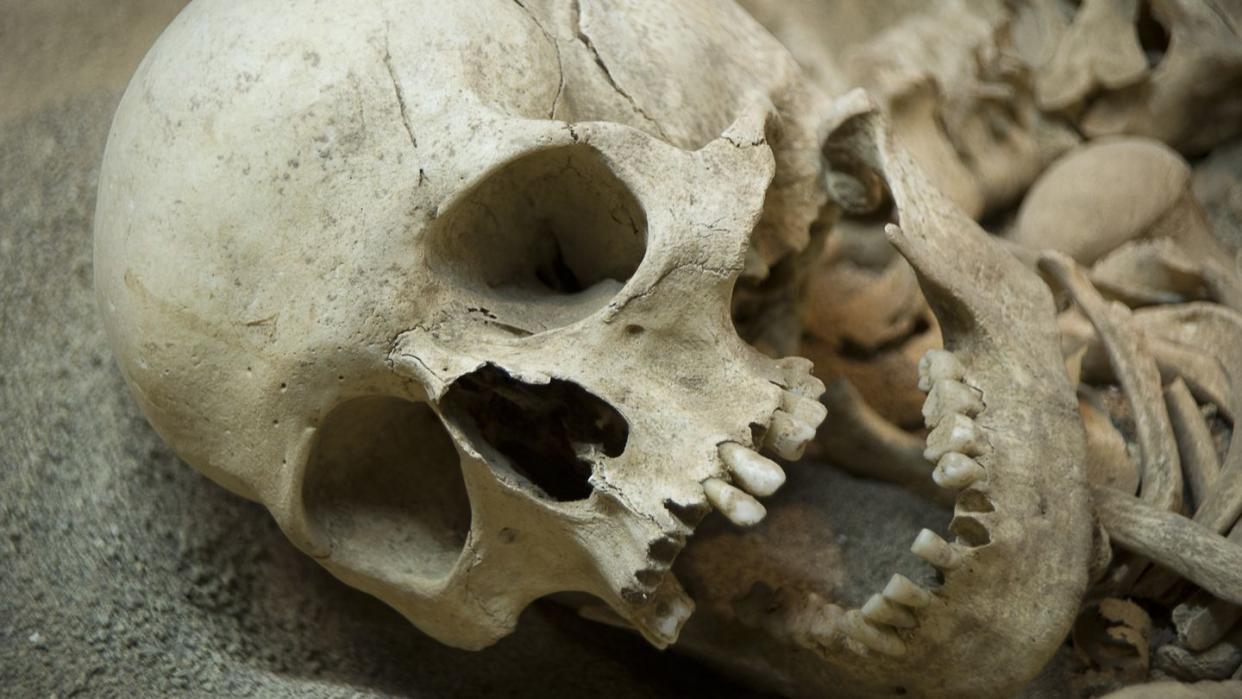Scientists Might Have Discovered a Whole New Human Lineage

The study of a human-like jawbone discovered in China offers up a mixture of features from both humans and other hominins.
The hybrid form of the jawbone could indicate that human morphologies were present earlier than previously believed.
The key feature of the finding was the lack of a true chin.
Scientists call it a mandible. Most folks know it as a jawbone. Regardless of what you call it, one found in China has the scientific community questioning a few things about the mashup of humans and earlier ancestors.
In a study published in the Journal of Human Evolution, a team of Chinese researchers document their full workup of hominin fossils dating 300,000 years back, including a mandible—called the HLD 6 mandible—that fit with a cranium found in East China’s Hualongdong excavation.
The results were, well, surprising—the jawbone was reminiscent of both Late Pleistocene hominins and recent modern human morphology.
“This combination of both archaic and modern human features identified in the HLD 6 mandible is unexpected, given its late Middle Pleistocene age and differs from approximately contemporaneous Homo members such as Xujiavao, Penghu, and Xiahe,” the study says. “This mosaic pattern has never been recorded in late Middle Pleistocene hominin fossil assemblages in East Asia.”
The big clue was the fact the fossil lacks a “true chin,” offering up a sort of amalgam species not seen before.
Even with a triangular lower edge and curvature like Late Pleistocene hominins and modern humans, the lack of a true chin pushes this potentially unknown species much earlier in history. But in combination with a collection of more modern features—especially in the face, akin to a Homo erectus—researchers say this find further supports the “high morphological diversity in hominin evolution.”
There are clues throughout the cranium and mandible that can lead scientists to sway one way or the other on the ancient vs. modern spectrum, complicating the understanding of morphological diversity that existed in the late Middle Pleistocene hominin record in East Asia.
While other remains with some crossover appeal found in the region have been chalked up to Denisovans, the authors of the HLD 6 study say that this jawbone is simply too unique to fit into something we think we already know. They posit this Hualongdong find could derive from a “third lineage”—one that isn’t Homo erectus or Denisovan, but falls closer on the evolutionary timeline to Homo sapiens.
A single mandible opens a new world of ancestral possibilities.
According to the study’s authors, this find throws some previously believed modern human timelines into question. “Modern human morphologies could have been present as early as 300 ka,” they write, “and earlier than the emergence of modern humans in East Asia.”
You Might Also Like

